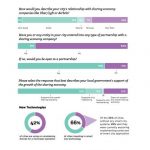Reframe your thinking about the beacon opportunity
Beacons may not be in the media limelight as of late, but contributor Brian Handly believes we’re seeing accelerating deployments of them for a reason.
![]()
Are you tired of hearing how beacons are the next best thing? They’ll be the greatest because marketers can send real-time push alerts when someone walks through the door, right?
I’m tired of those articles as well, and there’s a reason you hear much less about beacons than you did two years ago: Beacons lost their shine.
Marketers overestimated how much consumers wanted that experience of pop-up notifications and buzzing messages about coupons in their pockets as they walked in the door. Beacons seem to be on the classic Gartner “hype cycle”: a big spurt of initial interest, the hype wears off, then the product, if worthy, slowly gains traction.
This is indeed an article about beacons, but not perhaps what you would expect. Don’t click away just yet. These little Bluetooth signal broadcasting devices will play an important role in the current evolution of marketing technology.
If you know what beacons are and what they do, join me again after this paragraph. However, for those who do not know, a beacon simply broadcasts out its own Bluetooth signal. To detect a beacon at a location, a smartphone needs an app on the phone looking for beacons. Once detected, the app on the phone decides what to do with that signal — send a push alert, surface new content, record the interaction, do nothing, or do something later with the data.
It’s the last element — do something with the data — which has been severely underestimated.
Where beacons shine: Audience data and attribution
When a device bumps into a beacon, it produces an incredibly precise and accurate location data signal — we’ve typically observed a ten-fold improvement in accuracy over GPS-derived lat/long data across our network. With exact location data comes the ability to do two things incredibly well:
- Build audience profiles of interests and behaviors
- Measure foot traffic and therefore create the critical link toward building statistically significant attribution solutions, or being able to measure that digital campaigns resulted in actual foot traffic.
(If you don’t think every major tech company is racing toward an attribution solution, I submit Snap’s purchase of Placed as Exhibit 1.)
The challenge with GPS data, regardless of the source, is that it is only accurate to within 100 meters 30 to 40 percent of the time (PDF) if derived through the third-party sources like the bid stream. Across our entire network, we’ve found that the accuracy is closer to 70 to 80 percent if derived directly from the app.
If you build audience segments and attribution models based on garbage data, you get garbage results. Increasing the confidence of the results via beacon detection by a factor of 10 is a significant step forward in marketing technology.
Let’s revisit the sentiment about the shine wearing off beacons and why they’ve been receiving less press coverage. While both of these are true, the media misses a salient point. Beacon deployments are continuing by the hundreds of thousands for those two big reasons above: audience data and attribution.
Beacons are being deployed by marketers not from the household name brands but by the vendors servicing those brands. These marketers recognize that beacons will always have a place for real-time, location-based marketing with the right use case, but that the big value lies in the data generated behind the scenes.
I believe we’ll see an arms race by retailers for new tech adoption given Amazon’s recent purchase of Whole Foods. Those that don’t invest will be at risk of falling behind and out of favor with consumers.
Beacons have made it through the initial hype of The Gartner Hype Cycle. There’s a massive opportunity to leverage beacons, alongside GPS data and other location signals, to make the next transition in marketing technology, demonstrating true attribution of advertising. Forging ahead on that “Slope of Enlightenment” toward the “Plateau of Productivity” will likely take more time than we imagine, but it will be worth the trip.
Some opinions expressed in this article may be those of a guest author and not necessarily Marketing Land. Staff authors are listed here.
Marketing Land – Internet Marketing News, Strategies & Tips
(20)












